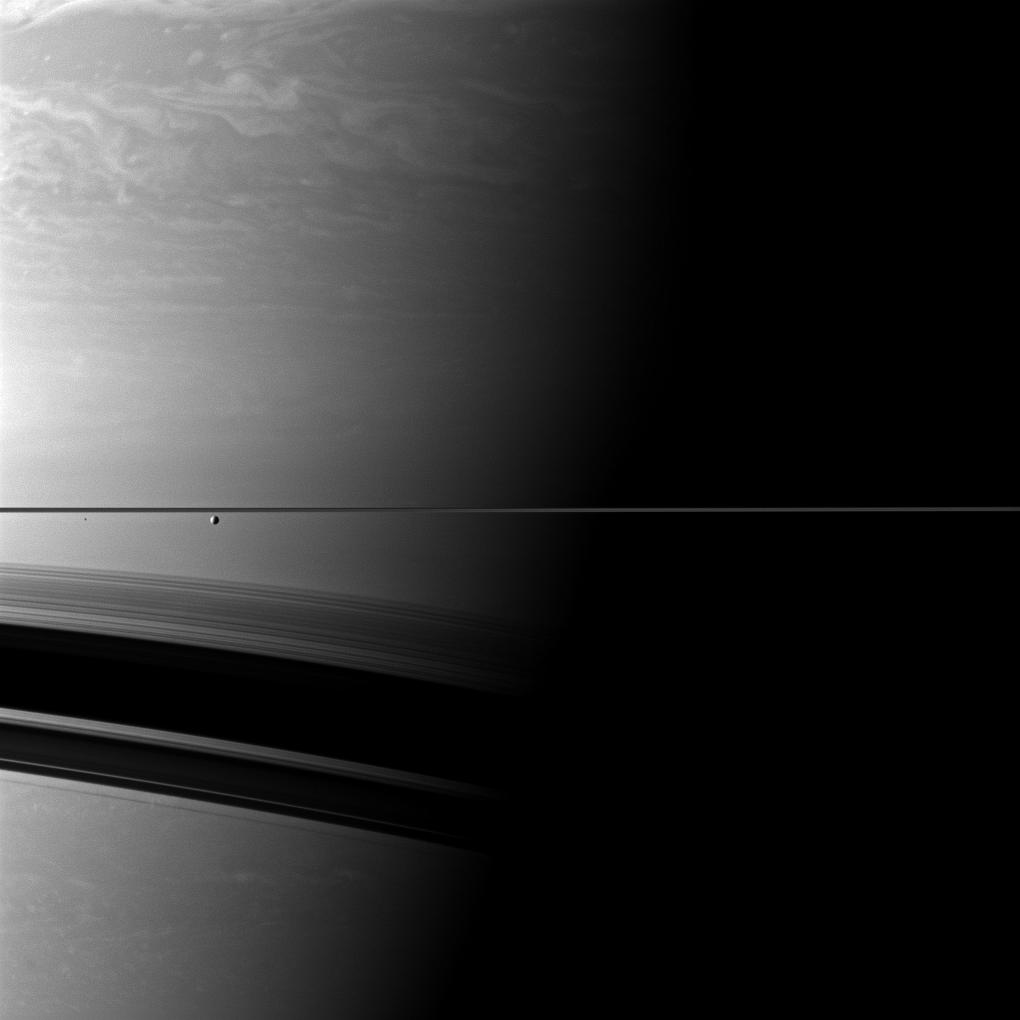Tiny by the Terminator

| PIA Number | PIA14587 |
|---|---|
| Language |
|
A pair of Saturn's moons appear insignificant compared to the immensity of the planet in this Cassini spacecraft view along the terminator where day transitions to night.
The larger moon Enceladus (313 miles, or 504 kilometers across) is also on the left, just a bit closer to the center of the image. Epimetheus (70 miles, or 113 kilometers across) appears as a tiny black speck on the far left of the image, left of Enceladus, just below the thin line of the rings. The rings cast wide shadows on the southern hemisphere of the planet.
This view looks toward the northern, sunlit side of the rings from just above the ringplane.
The image was taken with the Cassini spacecraft wide-angle camera on Nov. 4, 2011 using a spectral filter sensitive to wavelengths of near-infrared light centered at 752 nanometers. The view was acquired at a distance of approximately 746,000 miles (1.2 million kilometers) from Saturn and roughly 600,000 miles (1 million kilometers) from Enceladus and Epimetheus. Image scale is about 47 miles (75 kilometers) per pixel on Saturn, 37 miles (60 kilometers) per pixel on Enceladus and 41 miles (66 kilometers) per pixel Epimetheus.
The Cassini-Huygens mission is a cooperative project of NASA, the European Space Agency and the Italian Space Agency. The Jet Propulsion Laboratory, a division of the California Institute of Technology in Pasadena, manages the mission for NASA's Science Mission Directorate in Washington. The Cassini orbiter and its two onboard cameras were designed, developed and assembled at JPL. The imaging team is based at the Space Science Institute, Boulder, Colo.
For more information about the Cassini-Huygens mission visit http://saturn.jpl.nasa.gov or http://www.nasa.gov/cassini . The Cassini imaging team homepage is at http://ciclops.org .
Credit: NASA/JPL-Caltech/Space Science Institute
